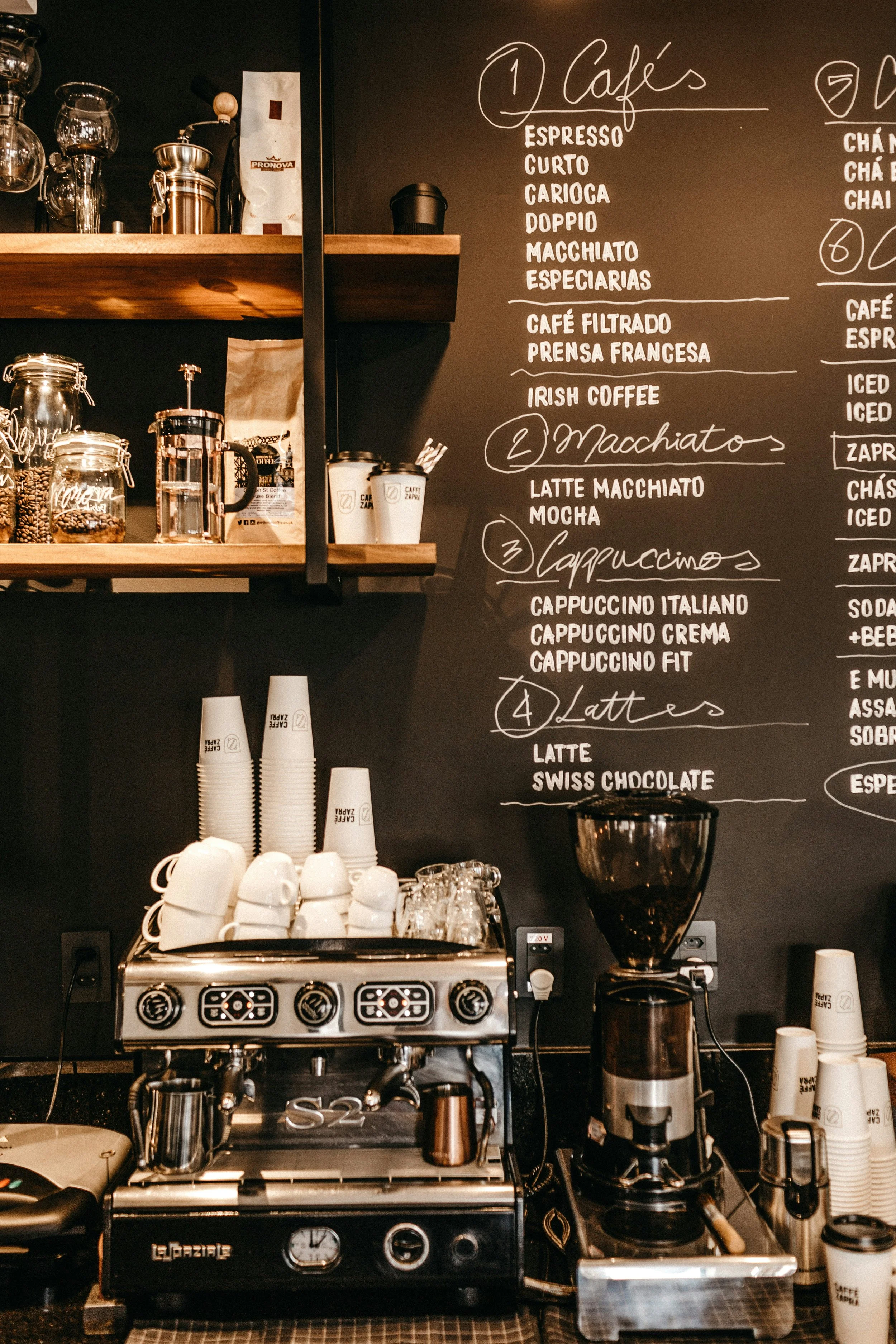What is a Brand System and Why Even Small Businesses Need One.
A brand system is like a well-organised library - everything in its place, easy to find when you need it.
If you run a small business, you’ve probably been told you need a brand - a logo, a colour palette, maybe a tidy instagram feed. But what actually makes those pieces work together is your brand system. Your brand system can be the missing link, the final polish to stand out in a crowd.
For small businesses, this isn’t just a nice-to-have but the difference between being remembered and being overlooked.
Let’s unpack what a brand system really is - and why building one might be the smartest investment you make in your business this year.
WHY YOUR BRAND SYSTEM IS YOUR SECRET SAUCE ?
A brand system might sound like something reserved for big corporations with even bigger budgets, in reality, it’s one of the most cost-effective ways to keep your business consistent, recognisable, and trusted. Whether you’re a solopreneur, a start-up, or just starting to test the waters, a simple brand system can save you time, reduce stress, and make your business look polished without overspending.
Your brand is the reputation you build in people’s minds, and your brand system the toolkit so every touchpoint reinforces that reputation. From your social media posts to your invoices. A brand system can compound to make your offering instantly recognisable and credible.
Think of it as your personal instruction manual for keeping everything “on brand,” no matter what platform or format you’re working with.
Your brand system is the pen that keeps your message consistent, page after page.
Why “system” matters
Many entrepreneurs start with a logo file, a few fonts, and a gut instinct. This works…but then you need to hand something over, create content quickly, keep up with multiple platforms.
Without a system, your visual style can start to drift - and the impact you’ve worked so hard to create can begin to fade.
A brand system is your safeguard, a set of rules, references, and ready-to-use assets that make your brand easy to apply instantly, consistently, no matter who’s creating the material, or what platform you’re on.
That’s why a brand system isn’t just a nice-to-have; it’s a practical toolkit.
Essentials of a strong brand system
Behind every polished brand identity is a system that makes design choices effortless.
While brand systems can be elaborate for large companies, a small business, a lean one-person operation, only needs the core elements to gain big benefits. These often include:
⎷ Visual identity – logo variations, colours, typography, and image style.
⎷ Tone of voice – how your business “sounds” in emails, social, and ads.
⎷ Templates and assets– ready-to-use layouts for social media, proposals, presentations, and more.
⎷ Customer experience rules – how your business shows up at every touchpoint, from invoices to Instagram replies.
⎷ Usage guidelines – a simple reference so everything stays consistent.
Start small and expand as your business grows. The key is to build a living system, not a dusty PDF no-one looks at.
Without a brand system, every task takes longer - like typing from scratch.
In the Kitchen: Fully Stocked or Just the Basics
Contrast your brand system with a kitchen. In a professional restaurant, chefs know exactly where every pan, spice, and utensil is before they begin. Similarly the most minimal set up that could be a pan, spoon, and ingredients - still relies on a few essentials and some order. You arrange your space so cooking becomes easier not harder.
Now imagine the opposite: a busy worktop, mystery ingredients, and missing utensils.
Even a simple set up works when the essentials are in place - the same applies to your brand system.
A brand system works the same way. It’s the organised kitchen of your business identity - the recipes, ingredients, and tools you need to create content, design materials, and communicate clearly. Without it every task takes longer - whether it’s posting on social media, drafting an email, or updating your website.
Like a kitchen team, your brand system keeps roles clear and makes collaboration smoother.
Just like a skilled cook can adapt recipes to whatever kitchen they’re in, you should be able to apply your brand system in any setting. The goal isn’t to have everything - it’s to know exactly what you need to get the job done, no matter the constraints.
A brand system reduces friction and gives you more thinking time to focus on building your business, expanding your client base or making those post-it notes ideas into something real. The difference between ingrdients, a menu, and a whole restaurant operation.
Post-it - The Simple System That Stuck
If Kitchens show why systems matter behind the scenes. Post-It Notes prove how consistency creates recognition in the real world.
Post-it Notes - The Sticky Power of Consistency
Why consistency matters more than creativity alone.
how 3M Post-it Notes became an icon.
Brand systems aren’t only for billion-dollar companies. Still big brands can teach us alot - just look at 3M’s Post-it Notes.
In 1977, Post-it Notes were a happy accident - simple squares of paper with a strip of adhesive 3M. But their genius wasn’t just the sticky paper; it was the consistent brand system. Every pad looked the same, every note stuck the same way, and every colour carried meaning. Together, those cues created instant recognition and built customer trust. That consistency turned Post-it Notes into a staple in offices, schools, and homes.
Without a system, ideas stay scattered - harder to connect and harder to act on.
consistency matters more than budget
Your brand system works the same way: repetition builds recognition, and recognition builds trust. For small businesses, the takeaway is what matters most isn’t the size of your budget, but showing up the same way every time so people remember you.
Running Shoes: Built for the long Run
A brand system supports your business mile after mile - just like the right running shoes.
Think of your favourite running or walking shoes. You didn’t pick them at random - you chose them because of how they made you feel, what they represented, and whether you trusted the brand behind them. Nike, Adidas, Brooks, Patagonia, didn’t win your loyalty overnight. They built it through consistent identity and performance across their product line, their advertising, and their community presence.
A good pair of running or walking shoes supports you mile after mile. They’re designed to fit, perform, and last. That’s what a brand system does: it supports your marketing, ensures your design choices fit together. It builds trust by ensuring your audience always know what to expect. When your logo, tone of voice, and visual identify align seamlessly, you feel reliable - even before someone buys from you.
Consistency is like training - each step builds momentum and long-term results.
Just like shoes support you step after step, a coffee shop’s brand system supports consistency customer after customer.
A strong brand system creates comfort and confidence that customers instinctively choose.
Too much choice without clarity can overwhelm - your brand system keeps things simple.
A Coffee Shop Case Study
Consistency turns a coffee shop from another option into the obvious choice.
Picture this: a neighbourhood coffee shop.
Different styles, same goal - clear menus help customers decide, just like a brand system.
Scenario 1:The shop opens with a mismatched logo, its Instagram posts use three different fonts, and staff uniforms don’t match. Some days the coffee cups are plain, other days they’re branded. The website tone feels formal, but the in-store chalkboard menu is playful.
Customers are confused about whe the brand stands for.
Scenario 2: Imagine the same shop with a simple brand system in place. The logo is clean and consistently applied. Instagram used the same colour palette as the store interior. The takeaway cups always carry the same design. Staff wear aprons with a subtle branded badge. The website tone of voice matches the friendly in-store vibe.
Which shop resonates - and stays memorable, the second one? That’s the quiet strength of a brand system: beyond looking good, it builds subtle cues that guide customer decisions. Like the smell of freshly brewed coffee, it creates comfort and confidence that help customers choose you instinctively even with equal products and pricing.
Why Small Businesses Win Big with Consistency.
It’s easy to assume that only large corporations need brand systems. But in reality, small businesses stand to gain the most. Here’s why:
Recognition compounds over time. Each time you show up consistently - on social,in print, or in person - you’re adding another “memory hook” in your customer’s mind.
Trust builds faster. When your visuals, voice, and values align, you feel credible. Customers sense when a brand is put together (or not).
Saves you time and money. With templates, brand guidelines, and pre-agreed rules, you don’t waste hours re-deciding how things should look or sound.
Scales with you. As your business grows, your brand system keeps new hires, designers, or partners on the same page.
Small businesses can struggle without a brand system in the switch between online and real world. Where inconsistent tone and visuals can confuse customers. And benefit from the timesaving not reinventing emails and social posts.
According to a Forbes article on consistent branding drawing on research from Lucidpress,businesses that present their brand consistently across platforms can increase revenue by up to 23%. For small businesses, that kind of lift can mean the difference between being noticed and being overlooked.
Getting Started: Building Your Brand System
The idea of a “system” might sound daunting, but it doesn’t have to be complicated. Start small and build over time.
Here are five practical steps.
1.Define your core elements. Logo, colour palette, fonts, and imagery style. Keep them consistent.
2.Document your tone of voice. Are you friendly? Expert? Playful?
Write down 3-4 guiding principles. Example a playful cafe that writes menu boards with jokes vs a law firm that keeps emails professional.
3.Create templates. For social posts, presentations, or invoices - consistency matters in the small things.
4.Set rules for usage. Decide how your logo should appear, what colours to avoid, and which fonts are approved.
5.Keep it accessible. Store your assets and guidelines in one place so you and your team can easily use them.
6. Growth Flexibility. How your Brand system adapts across new platforms (Tiktok, newsletters). Guides for freelancers, or partners.
Your toolkit doesn’t need to be complex - just reliable and ready when you need it.
The Bottom Line
Every small business has a brand. Question is whether it’s intentional or accidental. A brand system transforms a scattered set of efforts into a strategic toolkit - helping you punch above your weight, scale faster, and build loyalty that lasts.
Without one, you’re stuck in the cluttered kitchen and more effort to make something work. With one, you’re cooking with confidence, showing up consistently, and building a brand that lasts.
If the kitchen analogy shows why systems are practical, and ‘Post-its prove why they can spark innovation, then coffee shop shows the impact in the real world: a brand system is the difference between another option and becoming the choice.
So the real question isn’t whether you need a brand system - its when you’re going to start building yours.
A strong brand system sparks clarity - turning bright ideas into something people recognise.
The next time someone asks what makes your business stand out, you’ll have more than a logo to point to - you’ll have a system that speaks for itself.
Start simple. Stay consistent. Build as you grow.
Understanding a brand system is the first step. The next is building one that actually scales with your business. If your brand feels inconsistent or you’re tired of making design decisions from scratch, you need a blueprint. Download our free guide: The Solopreneur’s 5-Step Clarity Construct to start building your own system foundation today.
You now know the difference a Brand System can make. Want to skip the months of trial and error? As a solo operator, your time is your most precious asset. We help you go from “I need a system.” to “I have a system.” in just a few focused sessions with our mid-ticket service. Explore our Service Tiers to see which solution fits your current stage of growth.
- Lucidpress study on brand consistency/ (via Forbes)
- 3M's Post-it Notes:The Accidental Invention (3M Official Site)
- 3M — Official Website
- Photo by Susan Q Yin on Unsplash — Library Interior
- Photo by Aaron Burden on Unsplash — Fountain Pen and Notebook
- Photo by Patrik Michalicka on Unsplash — Brand Identity Workspace
- Photo by Florian Klauer on Unsplash — Vintage Typewriter
- Photo by Myles Tan on Unsplash — Outdoor Cooking
- Photo by Jimmy Dean on Unsplash — Couple Cooking in kitchen
- Photo by Nathália Rosa on Unsplash — Wall of Assorted Sticky Notes
- Photo by Bruno Nascimento on Unsplash — Runner on Outdoor Stairs
- Photo by Jonathan Borba on Unsplash — Coffee Shop Menu with Espresso Machine
- Photo by Roman Bozhko on Unsplash — Coffee Shop Menu and Cycles
- Photo by Mitchell Luo on Unsplash — Highlighter Pens
- Photo by Diego PH on Unsplash — Lightbulb











